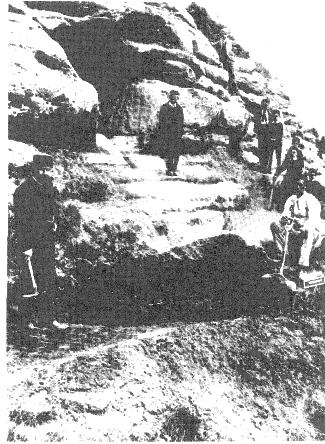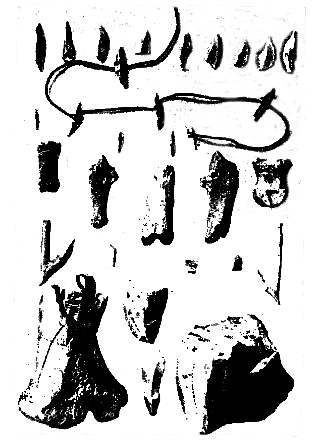
Primeval Refuse Heaps at Hastings
W. J. Lewis Abbott
Natural Science 1897
[40] When we reflect upon the abundance of refuse heaps left by early man on the eastern coast of the North Sea, as compared with similar accumulations on our own shores, we are tempted to seek a reason or the remarkable difference. In the former region these relics of man exist for many miles upon the shores as enormous heaps, hundreds of years long and hundreds of feet in width, usually varying from three to six feet, but sometimes attaining as much as ten or twelve feet in thickness; while in England they are practically unknown. ...
[44] There was one feature about these which puzzled me for a long time, and that was that the present periphery of the flake-face of the flint usually truncated these secondary flakings. It, therefore, became evident that the secondary base was worked round a single or double ridge while the lance-tip was yet upon the core, from which it was dislodged by the last skilful blow. In experimenting I found this practicable; and ultimately I found a block of flint worked into ridges in the process of manufacturing these tools in the way suggested, with one base worked ready for the next blow to produce a perfect implement. This specimen is shown in Plate VI., at the bottom right corner, and the arrow marks the point at which the last blow would have been struck, that would have dislodged the finished tip, such as is seen just at the left of it.
II Primeval Refuse Heaps at Hastings
Natural Science 1897
[94] The most remarkable of all the flint implements found in the Hastings Kitchen Middens–or we may perhaps even say anywhere else–is a group of highly specialised diminutive forms totally unlike anything outside their own class. ... More recently I have noticed a few spheroidal flints, with the edges finely contused. I find that by using these upon a flake lying upon a banker I can level off small flakes, giving rise to a kind of working very similar to that found on the Midden flints....
[99] The occurrence of these implements thirty or forty miles inland in a number of places, suggests their being the work of a Nomadic people, but whether or not the trans-European localities can be taken to indicate the line of original migration, further researches will alone decide. This much is however proved, that the Midden men will henceforth be added to the pre-historic races of Britain.

Plate V
Cliff at Hastings with Kitchen Midden on Ledge Below a Cavern

Plate VI
Flint Implements and Worked Bones from the Hastings Kitchen Middens